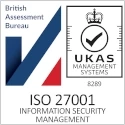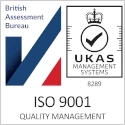15
+
YEARS OF
EXPERIENCE
1000
+
SUCCESSFUL
Projects
80
+
Satisfied
Clients

As organizations continue their digital transformation journeys and increasingly migrate their infrastructure to the cloud, the need for a solid cloud security design has become a top priority. Cloud environments offer unparalleled scalability, flexibility, and cost-efficiency, but they also introduce unique security challenges. Traditional on-premises security strategies simply don’t translate to the cloud, where dynamic workloads, multi-cloud environments, and complex service architectures can create vulnerabilities.
What is Cloud Security Design?
Cloud security design refers to the process of creating a robust, secure framework for managing and safeguarding an organization’s digital assets and workloads in the cloud. Unlike conventional IT infrastructures, cloud environments require a security architecture that spans multiple dimensions, such as network security, identity and access management (IAM), data protection, incident response, and compliance management.
A secure cloud environment is not built on just implementing isolated security controls but requires a holistic, integrated approach that can scale with the organization’s needs. The goal of cloud security design is to ensure that all aspects of the cloud infrastructure are secure, including applications, data, networks, and identities, while maintaining the agility that the cloud promises.





Key Components of Cloud Security Design
To build a comprehensive and effective cloud security design, organizations must address several critical components that collectively form a resilient framework. These components include access control, data encryption, identity management, threat detection, and network security, all of which must work together to mitigate risks.
Access Control and Identity Management: One of the most fundamental elements of any cloud security design is ensuring that only authorized users and systems can access cloud resources. Identity and access management (IAM) tools play a pivotal role in managing permissions, ensuring that users and devices only have access to the resources they need to perform their duties. Multi-factor authentication (MFA) is another important measure that adds an additional layer of security by requiring more than one method of verifying a user’s identity.
Data Protection: Data security in the cloud is paramount. Unlike on-premises solutions, where data often resides within a defined perimeter, cloud environments are inherently more fluid. Organizations must employ data encryption for both data at rest and data in transit, ensuring that sensitive information is protected even if a breach occurs. Additionally, establishing secure backup and disaster recovery plans is essential for protecting data from loss due to cyberattacks or system failures.
Network Security: With cloud resources often spread across multiple locations and virtualized environments, network security is crucial to ensuring safe communication between different cloud components. This includes securing internal communication channels through virtual private networks (VPNs), implementing firewalls, intrusion detection systems (IDS), and using network segmentation to limit the attack surface. Security groups and network access control lists (ACLs) are also important in controlling the flow of data and preventing unauthorized access.
Threat Detection and Monitoring: A sound cloud security design must continuously monitor the environment for any signs of suspicious activity. This includes leveraging cloud-native security tools to detect abnormal behavior, such as unauthorized data access or unexpected spikes in network traffic. By implementing continuous monitoring and using automated threat detection tools, organizations can identify threats early and take appropriate action before an attack escalates.
Compliance and Governance: Cloud security design also needs to account for regulatory and compliance requirements. Many industries have strict regulations governing data protection, such as GDPR, HIPAA, and PCI DSS. A well-designed cloud security framework incorporates mechanisms to ensure that cloud services comply with these standards. Automated tools for auditing, logging, and reporting can assist in tracking compliance and ensuring that policies are followed across all cloud resources.
Cisco and Meraki
Comprehensive Cisco and Meraki solutions offering scalable networking, security, and cloud-managed systems for businesses of all sizes.Support
Reliable, 24/7 support services to resolve issues quickly, ensuring minimal downtime and smooth business operations.Procurement
Streamlined procurement services to source high-quality products, ensuring cost efficiency and timely delivery for your business.
Best Practices for Effective Cloud Security Design
Creating an effective cloud security design requires both technical expertise and a deep understanding of the organization’s operational needs. Below are some best practices that can help ensure a secure and resilient cloud architecture.
1. Adopt a Zero Trust Model: The Zero Trust security model is a critical approach for cloud security. It operates on the principle that no user, device, or application should be trusted by default, whether inside or outside the network. Every access request is verified before granting access, ensuring that each interaction is authenticated and authorized. By implementing a Zero Trust approach, organizations can limit the potential for lateral movement in the event of a breach, providing tighter security controls.
2. Implement Strong Encryption Practices: Data encryption is non-negotiable in cloud security design. Both encryption at rest (data stored on disks or in databases) and encryption in transit (data being transmitted over networks) are essential to safeguard sensitive information. Cloud providers typically offer encryption tools, but organizations should also manage their own encryption keys where possible to maintain control over their data.
3. Use Multi-Cloud or Hybrid Strategies: For organizations looking to avoid vendor lock-in or improve redundancy, using a multi-cloud or hybrid cloud approach can help. This strategy involves utilizing more than one cloud provider, which not only reduces reliance on a single vendor but also adds an additional layer of security. By diversifying cloud deployments, organizations can mitigate risks related to data breaches or outages associated with one cloud provider.
4. Automate Security Processes: Automation is essential for scaling cloud security operations without adding significant overhead. Automated security controls, such as patch management, threat detection, and compliance reporting, can help organizations keep up with the fast pace of cloud environments. Automation can also accelerate incident response times, ensuring that security issues are addressed immediately, reducing the impact of any potential breach.
5. Continuously Monitor and Assess Security Posture: Cloud environments are constantly changing, with new services being introduced and configurations being updated. Regular security assessments are necessary to identify vulnerabilities and ensure that the security design remains robust. Continuous monitoring with real-time alerts allows organizations to stay ahead of threats and adapt to changes in the cloud environment quickly.
6. Limit Permissions and Use Role-Based Access Control (RBAC): Following the principle of least privilege is essential when designing access controls. By restricting access to cloud resources based on roles and responsibilities, organizations can limit the impact of a compromised account. Role-based access control (RBAC) ensures that users can only access the resources necessary for their work, reducing the attack surface and minimizing the risk of unauthorized access.
Benefits of a Solid Cloud Security Design
A robust cloud security design offers several advantages for businesses, including improved data protection, compliance adherence, and operational continuity. A well-secured cloud environment allows organizations to confidently leverage cloud technologies without worrying about potential security breaches. The flexibility of cloud security design also enables organizations to scale security measures according to their evolving needs, ensuring that new applications, services, or users are protected as the environment grows.
By integrating cloud security design into the overall architecture of an organization’s IT infrastructure, businesses can also streamline incident response efforts, ensure better business continuity, and reduce the risk of costly breaches. Additionally, organizations that invest in cloud security design are better positioned to build trust with customers and clients by safeguarding their data and privacy.
Conclusion
In today’s digital landscape, a strong cloud security design is not optional—it is essential for safeguarding an organization’s assets and data in the cloud. A well-planned security architecture that incorporates best practices such as Zero Trust, encryption, and automated monitoring can help mitigate risks and enhance the overall security posture of cloud environments. As cloud adoption continues to grow, organizations must prioritize secure design to ensure that they can harness the benefits of the cloud without exposing themselves to unnecessary security threats. A comprehensive cloud security design enables businesses to operate confidently in the cloud, safeguarding their critical data and operations in an ever-evolving cybersecurity landscape.

answer time
satisfaction
score
on initial call
same business
day









